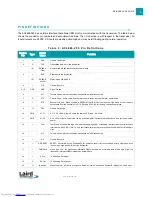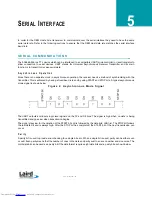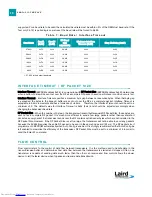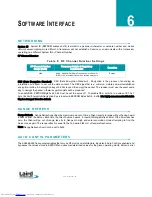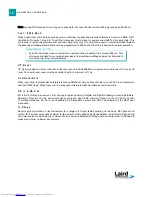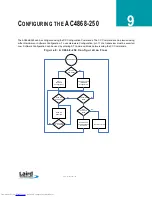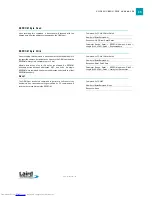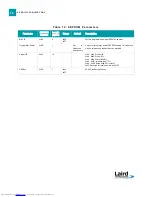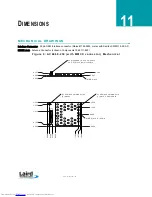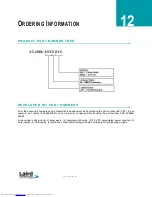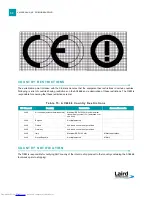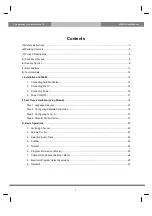
www.lairdtech.com
H
ARDWARE
I
NTERFACE
8
Below is a description of all hardware pins used to control the AC4868-250.
P I N D E F I N I T I O N S
G e n e r i c I / O
Both GIn pins serve as generic input pins and both GOn pins server as generic output pins. Reading and writing of
these pins can be performed using CC Commands.
T X D & R X D
S E R I A L T T L
The AC4868-250 accepts 3.3VDC TTL level asynchronous serial data on the RXD pin and interprets that data as either
Command Data or Transmit Data. Data is sent from the transceiver, at 3.3V levels, to the OEM Host via the TXD pin.
R S - 4 8 5
When equipped with an onboard RS-485 interface chip, TXD and RXD become the half duplex RS-485 pins. The
transceiver interface will be in Receive Mode except when it has data to send to the OEM Host. TXD is the non-
inverted representation of the data (RS485A) and RXD is a mirror image of TXD (RS485B). The transceiver will still use
RTS (if enabled).
H o p F r a m e
Transitions logic Low at the start of a hop and transitions logic High at the completion of a hop. The OEM Host is not
required to monitor Hop Frame. The AC4868 is a single frequency radio that uses fictitious hops, though it generates
a Hop Frame signal every time it transmits a timing beacon.
C T S
The AC4868-250 has an interface buffer size of 256 bytes. If the buffer fills up and more bytes are sent to the
transceiver before the buffer can be emptied, data loss will occur. The transceiver prevents this loss by asserting CTS
High as the buffer fills up and taking CTS Low as the buffer is emptied. CTS On and CTS Off control the operation of
CTS. CTS On specifies the amount of bytes that must be in the buffer for CTS to be disabled (logic High). Even while
CTS is disabled, the OEM Host can still send data to the transceiver, but it should do so carefully.
Note: The CTS On/Off bytes of the EEPROM can be set to 1, in which case CTS will go high as data is sent in and low
when buffer is empty.
G N D
Signal Ground. Pins are internally connected.
R T S
With RTS disabled, the transceiver will send any received data to the OEM Host as soon as it is received. However,
some OEM Hosts are not able to accept data from the transceiver all of the time. With RTS enabled, the OEM Host can
prevent the transceiver from sending it data by disabling RTS (logic High). Once RTS is enabled (logic Low), the
transceiver can send packets to the OEM Host as they are received.
electronic components distributor

